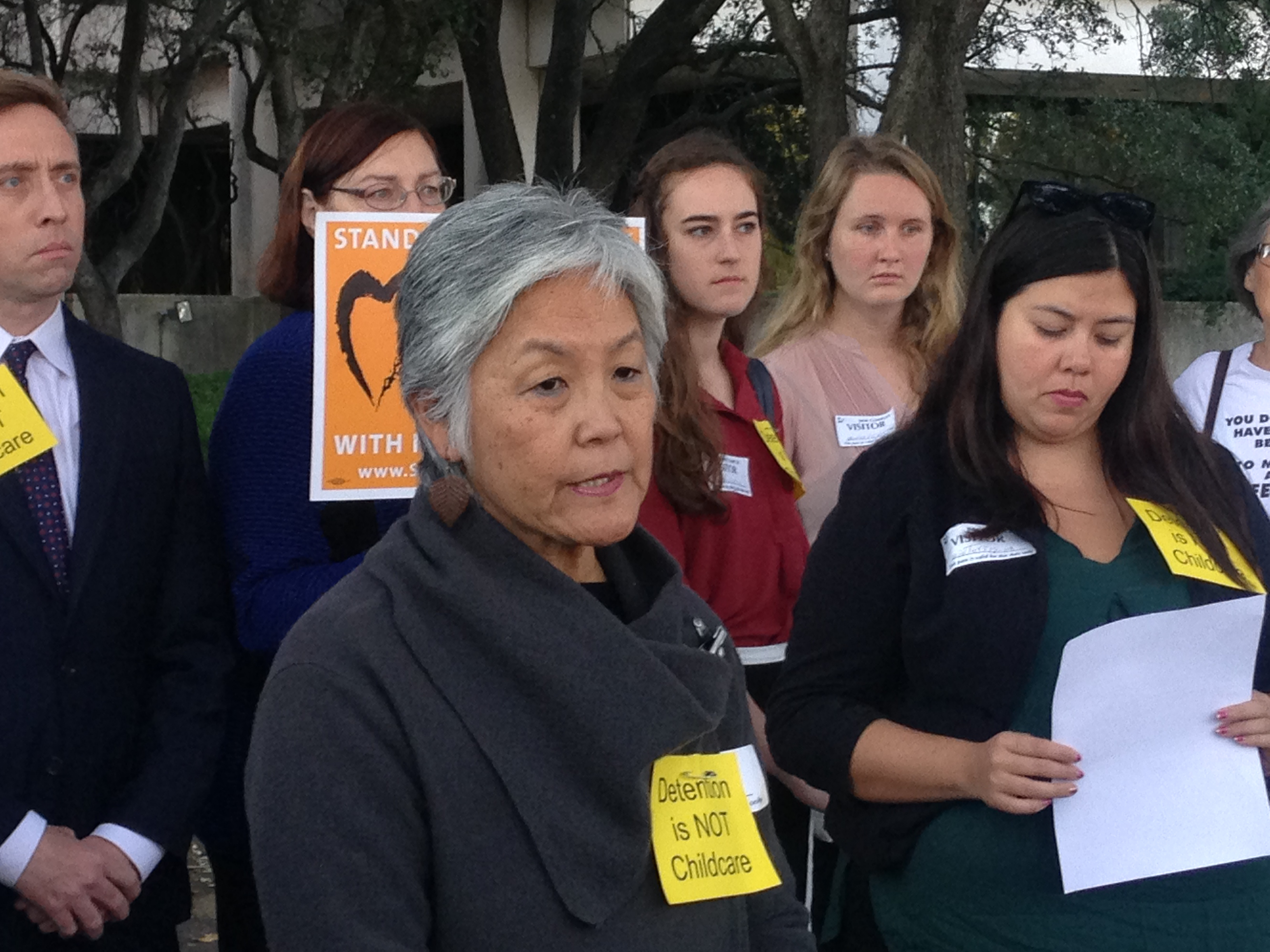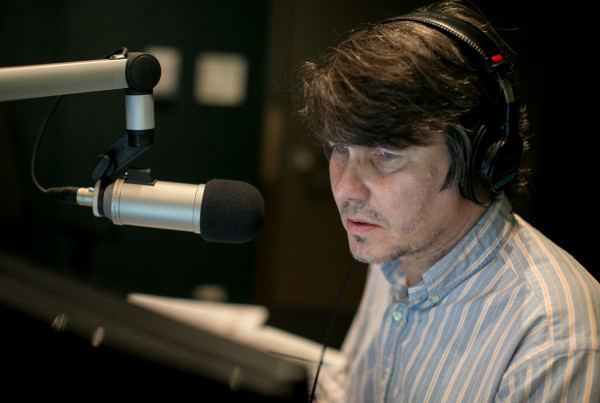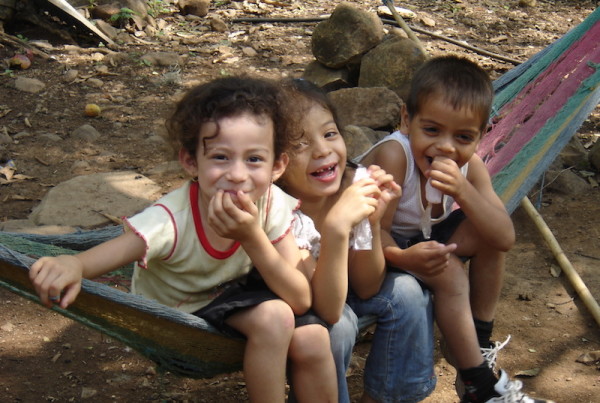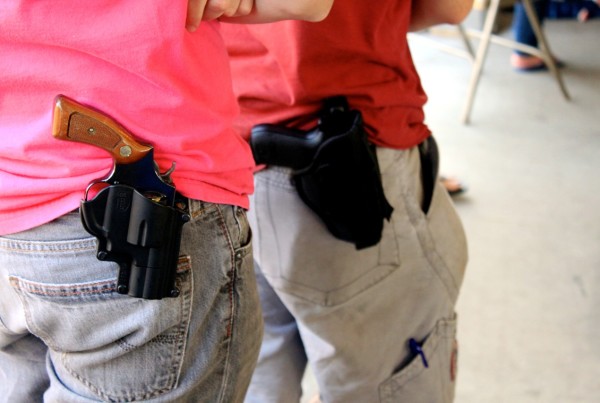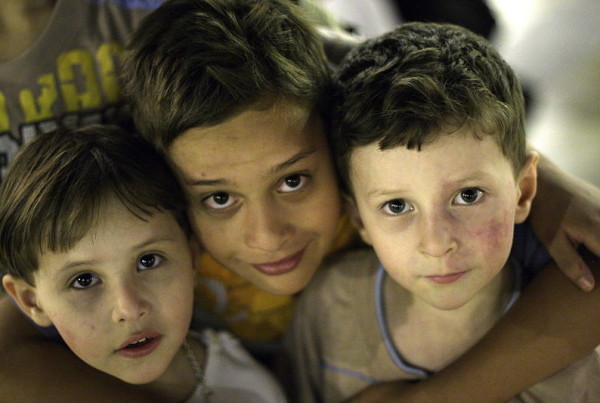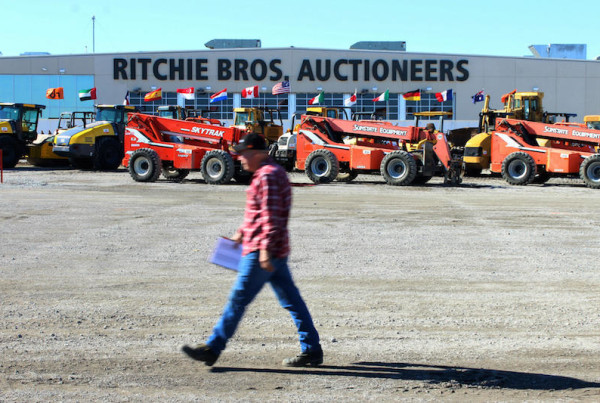Satsuki Ina is furious that the Texas Department of Family and Protective Services would even consider the possibility of licensing immigrant family detention facilities as childcare centers.
“It’s like putting lipstick on a pig,” she says.
She testified to the department at a public hearing yesterday. During World War II, Ina spent four years in a Japanese-American internment camp in Crystal City. She says the experience is with her to this day.
“I’m also a family psychotherapist specializing in trauma and have met with several of the children and their mothers in Dilley and observed tremendous symptoms of children who have been in captivity,” Ina says.
Ina says some of the children she’s worked with have tried to take their own lives – suffering from the trauma they experienced in their home countries exacerbated by their detention.
Last July, U.S. District Court Judge Dolly Gee reminded immigration officials that it was illegal to hold children in detention facilities. Jonathan Ryan leads RAICES – an immigrant advocacy organization based in San Antonio.
“One of the interesting realities about the decision of Judge Gee is that she was not announcing that what the government was doing was illegal,” Ryan says. “She was reminding the government that it had been illegal for about 18 years.”
Under a 1997 settlement agreement called Flores v. Meese, minor children must not be held in detention facilities for longer than 72 hours. After that, they need to go to relatives or be held in a non-restricted facility that is age-appropriate and meets their needs.
Since July, the private companies that run the detention centers have been leading an effort to transform them into licensed childcare facilities. They painted the facilities – but kept the perpetual lockdown and the barbed wire.
Now, they say they need the state of Texas to license them.
“It’s as if an applicant to Harvard who’s been denied admissions is asking Harvard to lower its standards,” Ryan.
The current standards licensed childcare facilities need to meet include time for leisure activities. Also, the environment must be non-restrictive and must comply with minimum space per child standards.
Hilda Ramirez and her nine-year-old son were recently released from the family detention center at Karnes City. Ramirez says her son wanted to speak at Wednesday’s hearing. He told her he wanted to tell authorities with the Department of State Health Services that it’s not fair to keep children in detention.
Ramirez says in Spanish that when she and her son were in detention, toys were only brought out when “important people” came to tour the facility. Once they left, all the toys were removed and mothers and children were sent back to their rooms. She says eight people shared each room – mothers, babies, and teenagers – some were related to each other, others weren’t.
The decision on whether or not Texas will change the childcare standards to transform family detention centers into “general residential operation” facilities is not likely to come before the end of the year. People can still submit comments here.


